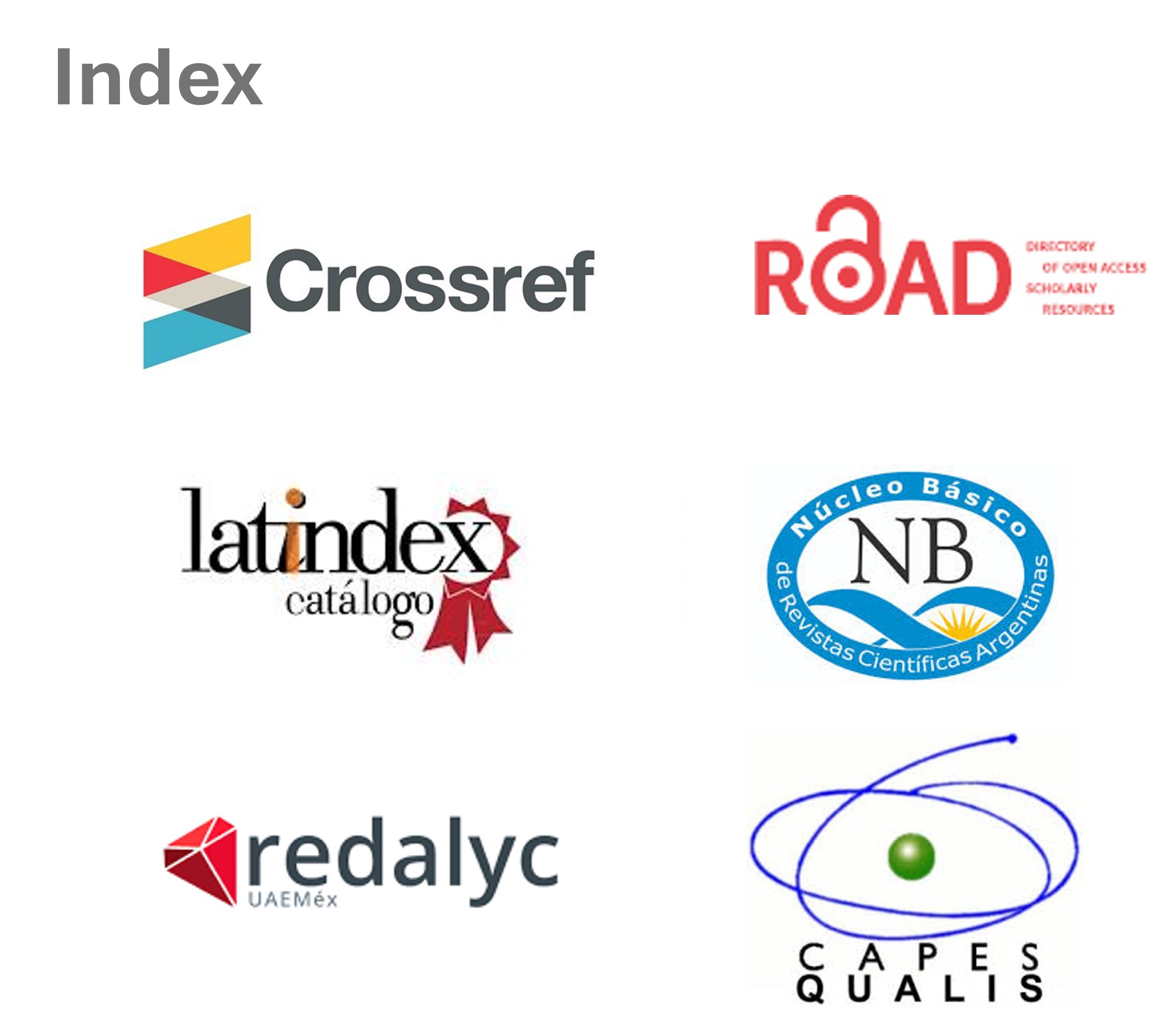Neurosciences divulgation in Argentina. An analysis of neuroscientists’ motivations for public communication of science
DOI:
https://doi.org/10.48160/18517072re46.90Keywords:
neurosciences, society, public communication of science, motivationsAbstract
In this article I explore the relationship between science and society through the reasons that lead neuroscientists to get involved in science diffusion activities. In particular, I focus on how beliefs about science and the scientific method become the first motivation of scientists’ participation in public space. It is not only a matter of keeping society up to date on neuroscience advances, but neuroscientists are excited to convey the values of science and show scientific activity as a morally exemplary activity. The paper is part of an ongoing research in which I analyse the circulation of scientific ideas about the brain in the Argentine public space from a heterogeneous corpus of secondary sources (such as books of dissemination, journalistic notes, television and radio programs, public events, among others) and primary (interviews with neuroscientists and observations in outreach activities, such as community talks, book presentations and cultural and theatrical exhibitions).
References
Bachrach, E. (2012), ÁgilMente: aprende cómo funciona tu cerebro para potenciar tu creatividad y vivir mejor, Buenos Aires, Random House Mondadori.
Balbi, M. (2017), “Me amenazaron de muerte por divulgar un estudio sobre el aborto”, Infobae, 1° de agosto. Disponible en <http://www.infobae.com/ salud/ciencia/2017/08/01/me-amenazaron-de-muerte-por-divulgar-unestudio- sobre-el-aborto/>.
Ballarini, F. (2016a), rec: por qué recordamos lo que recordamos y olvidamos lo que olvidamos, Barcelona, Debate.
Ballarini, F. (2016b), “Aborto: una mirada desde la evidencia cientifica”, Clarín, 16 de agosto. Disponible en <http://www.clarin.com/buena-vida/salud/Abortomirada- evidencia-cientifica_0_b1bx21fk.html>.
Bauer, M. y P. Jensen (2011), “The mobilization of scientist for public engagement”, Public Understanding of Science, vol. 20, N° 1, pp. 3-11.
Beck, D. (2010), “The appeal of the brain in the popular press”, Perspectives on Psychological Science, vol. 5, N° 6, pp. 762-766.
Becker, H. (2009), Outsiders. Hacia una sociología de la desviación, Buenos Aires, Siglo xxi.
Bentley, P. y S. Kyvik (2011), “Academic stuff and public communication: a survey of popular science publishing across 13 countries”, Public Understanding of Science, vol. 20, N° 1, pp. 48-63.
Besley, J. y M. Nisbet (2013), “How scientist view the public, the media and the political process”, Public Understanding of Science, vol. 22, N° 6, pp. 644-659.
Camacho, E. (2015), “Bachrach: tu cerebro no quiere que pienses, quiere que hagas siempre lo mismo”, La Vanguardia, 21 de junio. Disponible en <http://www.lavanguardia.com/vida/20150621/54432950953/bachrachtu- cerebro-no-quiere-que-pienses-quiere-que-hagas-siempre-lo-mismo. html>.
Christidou, V., K. Dimopoulos y V. Koulaidis (2004), “Constructing social representations of science and technology: the role of metaphors in the press and the popular scientific magazines”, Public Understanding of Science, vol. 13, N° 4, pp. 347-362.
Clarin (2017), “Genero por genero, los libros mas vendidos de 2017”, Clarín, 23 de diciembre. Disponible en <http://www.clarin.com/cultura/generogenero- libros-vendidos-2017_0_r1KbnxjzM.html>.
Cortassa, C. (2012), La ciencia ante el público, Buenos Aires, Eudeba.
Davies, S. (2008), “Constructing communication. Talking to scientists about talking to the public”, Science Communication, vol. 29, N° 4, pp. 413-434.
De la Barrera, N. (2014), “Neurociencias para todos”, Publicable, 29 de mayo. Disponible en <http://www.diariopublicable.com/cultura/2439-neurociencia- libros.html>.
Dumit, J. (2004), Picturing Personhood: Brain Scans and Biomedical Identity, Princeton, Princeton University Press.
Fayard, P. (1988), La communication scientifique publique, Lyon, Chronique Sociale.
Gallardo, S. (2005), Los médicos recomiendan: un estudio de las notas periodísticas sobre salud, Buenos Aires, Eudeba.
Gascoigne, T. y J. Metcalfe (1997), “Incentives and impediments to scientists communicating through the media”, Science Communication, vol. 18, N° 3, pp. 265-282.
Johnson, J. y M. Littlefield (2011), “Lost and found in translation: Popular neuroscience in the emerging neurodisciplines”, en Pickersgill, M. e I. Van Keulen (eds.), Sociological Reflections on the Neurosciences, Londres, Emerald Group, pp. 279-299.
Koh, E. -J., S. Dunwoody, D. Brossard y J. Allgaier (2016), “Mapping neuroscientist’s perceptions of the nature and effect of public visibility”, Science Comunication, vol. 38, N° 2, pp. 170-196.
Kreimer P., L. Levin y P. Jensen (2011), “Popularization by argentine researchers: the activities and motivations of conicet scientists”, Public Understanding of Science, vol. 20, N° 1, pp. 37-77.
La Nacion (2015), “Facundo Manes: La inteligencia individual se expande en equipo”, La Nacion, 1° de agosto. Disponible en <http://www.lanacion.com. ar/1790210-facundo-manes-la-inteligencia-individual-se-expande-en-equipo>.
Laszlo, P. (1993), La vulgarisation scientifique, Paris, Presses Universitaires de France.
Manes, F. y M. Niro (2014), Usar el cerebro. Conocer nuestra mente para vivir mejor, Buenos Aires, Planeta.
Manes, F. y M. Niro (2016), El cerebro argentino una manera de pensar, dialogar y hacer un país mejor, Buenos Aires, Planeta.
Mantilla, M. J. y M. Di Marco (2016), “La emergencia del cerebro en el espacio publico: las noticias periodisticas sobre las neurociencias en la prensa grafica argentina (2000-2012)”, Physis, vol. 26, No 1, pp. 177-200.
McComas, W. F. (1996), “Ten myths of science: reexamining what we think we know about the nature of science”, School Science and Mathematics, vol. 96, N° 1, pp. 10-16.
McComas, W. F. (1998), “The principal elements of the nature of science: Dispelling the myths”, en McComas, W. F. (ed.), The Nature of Science in Science Education, Dordrecht, Kluwer Academic Publishers, pp. 53-72.
Nelkin, D. (1995), Selling science: How the press covers science and technology, Nueva York, Freeman.
Pearson, G. (2001), “The participation of scientist in public understanding of science activities: the policy and practice of the uk research councils”, Public Understanding of Science, vol. 10, N° 1, pp. 121-137.
Peters, H. et al. (2008), “Science, media interface. It’s time to reconsider”, Science Communication, vol. 30, N° 2, pp. 266-276.
Pickersgill, M. (2013), “The social life of the brain: Neuroscience in society”, Current Sociology, vol. 61, N° 3, pp. 322-340.
Racine, E., O. Bar-Ilan y J. Illes (2006), “Brain imaging: A decade of coverage in the print media”, Science Communication, vol. 28, N° 1, pp. 22-143.
Racine, E., S. Waldman, J. Rosenberg y J. Illes (2010), “Contemporary neuroscience in the media”, Social Sciences & Medicine, vol. 71, N° 4, pp. 725-733.
Rainie, L., C. Funk y M. Anderson (2015), “How scientists engage the public. Pew research center”, Pew Research Center. Disponible en .
Rios, S. (2014), “La ciencia se puso de moda”, La Nación, 10 de mayo. Disponible en <https://www.lanacion.com.ar/1689226-la-ciencia-sepuso- de-moda>.
Sigman, M. (2015), La vida secreta de la mente: nuestro cerebro cuando decidimos, sentimos y pensamos, Buenos Aires, Debate.
Telam (2016), “Dos libros de Facundo Manes, en el podio de los mas vendidos”, Télam, 19 de julio. Disponible en <http://www.telam.com.ar/ notas/201607/155830-facundo-manes-ranking-libros-mas-vendidos. php>.
Weingart, P. (1998), “Science and the media”, Research Policy, vol. 27, N° 8, pp. 869-879.
Weingart, P. (2002), “The moment of truth for science: The consequences of ‘knowledge society’ for society and science”, embo Reports, vol. 3, N° 8, pp. 703-706.
Wells, D. S. (2013), “Telling it like it is: A Qualitative excavation of the factors that impel natural/physical sciences to serve as mass media news sources”, tesis doctoral, Knoxville
Downloads
Published
How to Cite
Issue
Section
License
Copyright (c) 2018 Redes. Journal of Social Studies of Science and TechnologyThe documents published here are governed by the licensing criteria
Creative Commons Argentina.Atribución - No Comercial - Sin Obra Derivada 2.5 https://creativecommons.org/licenses/by-nc-nd/2.5/ar/













